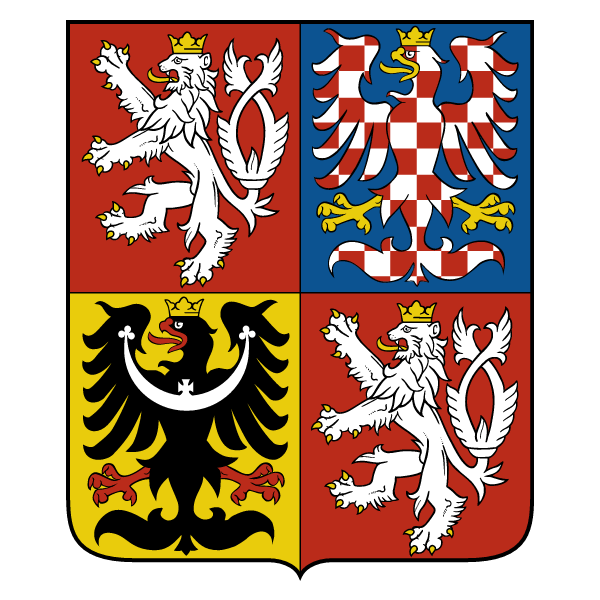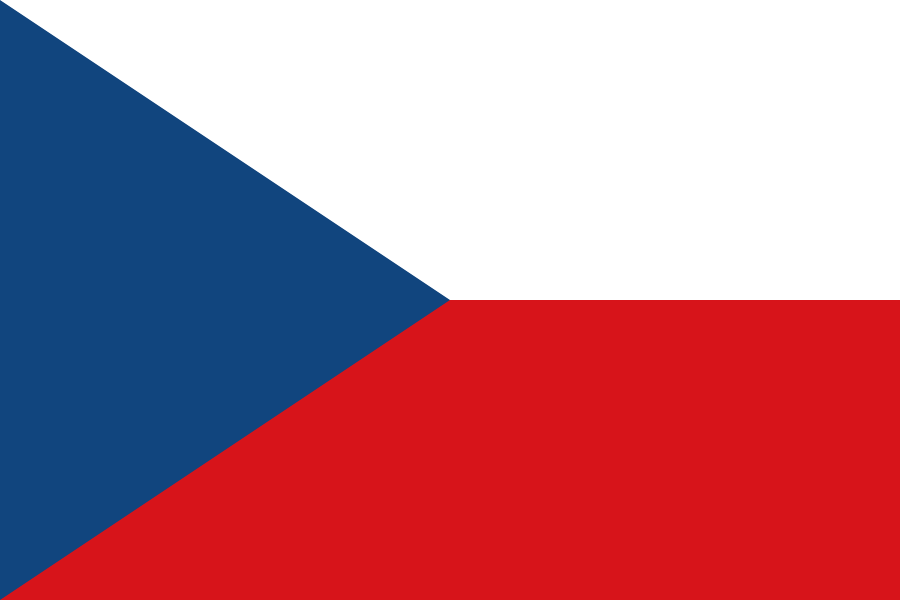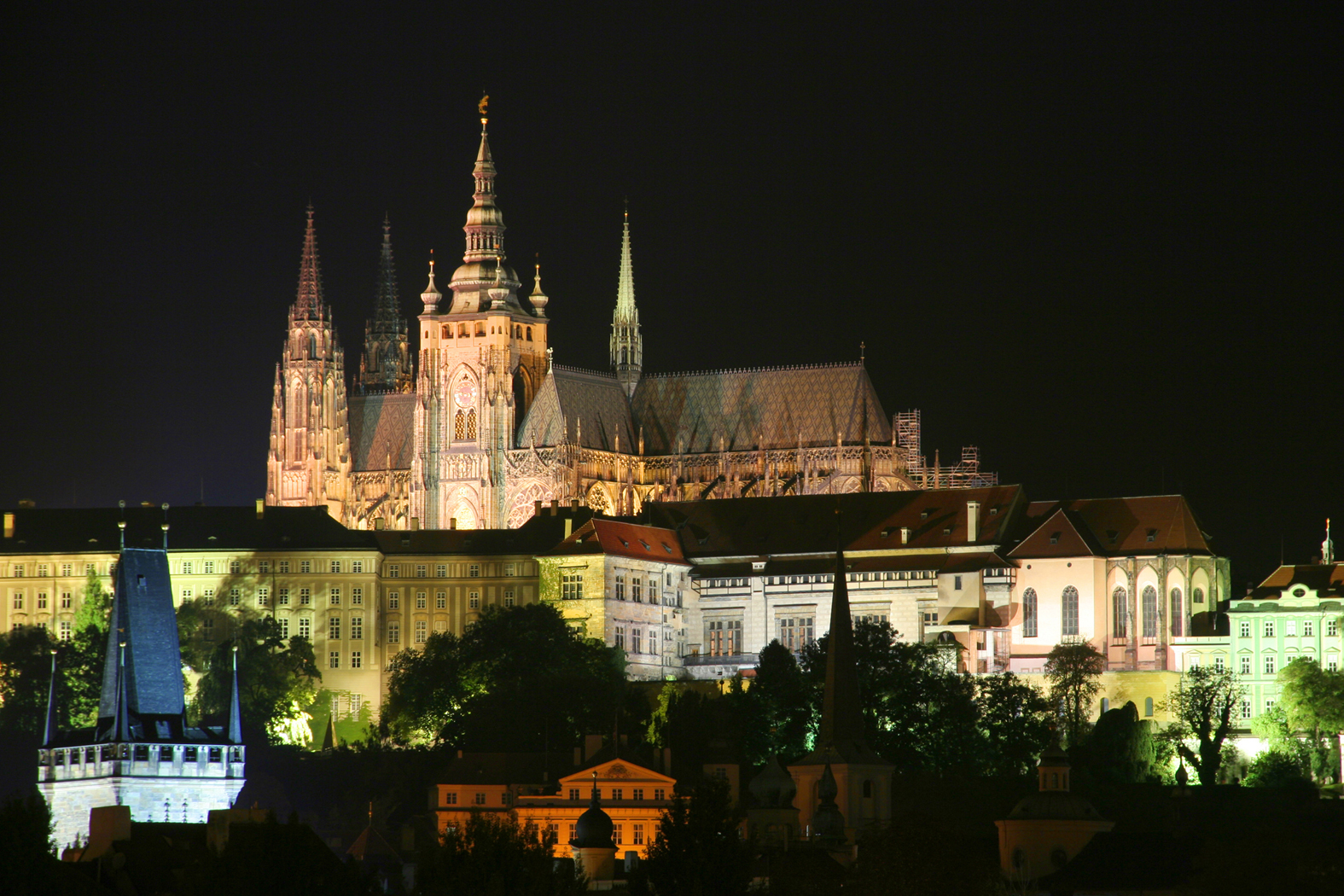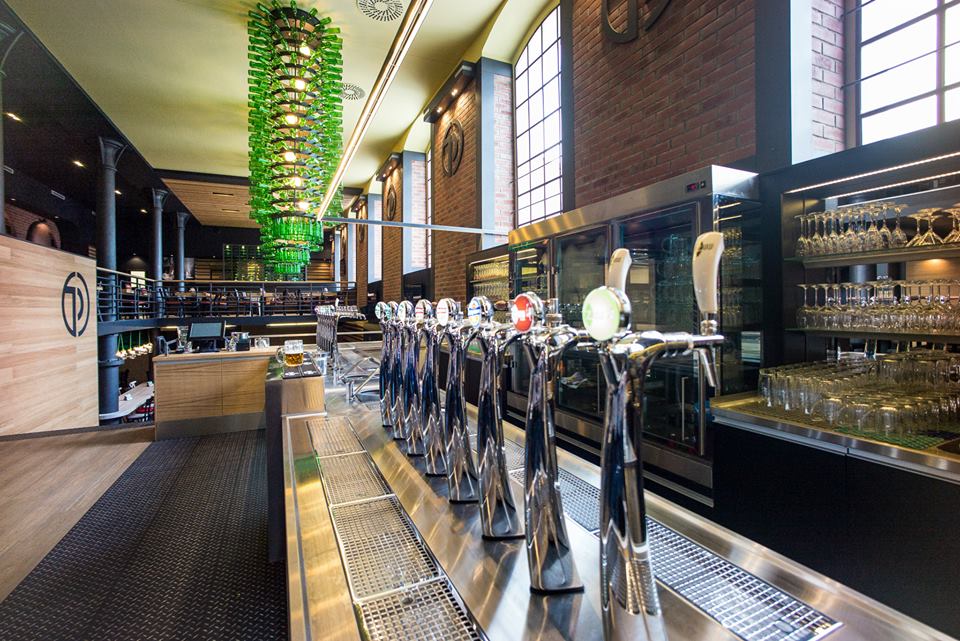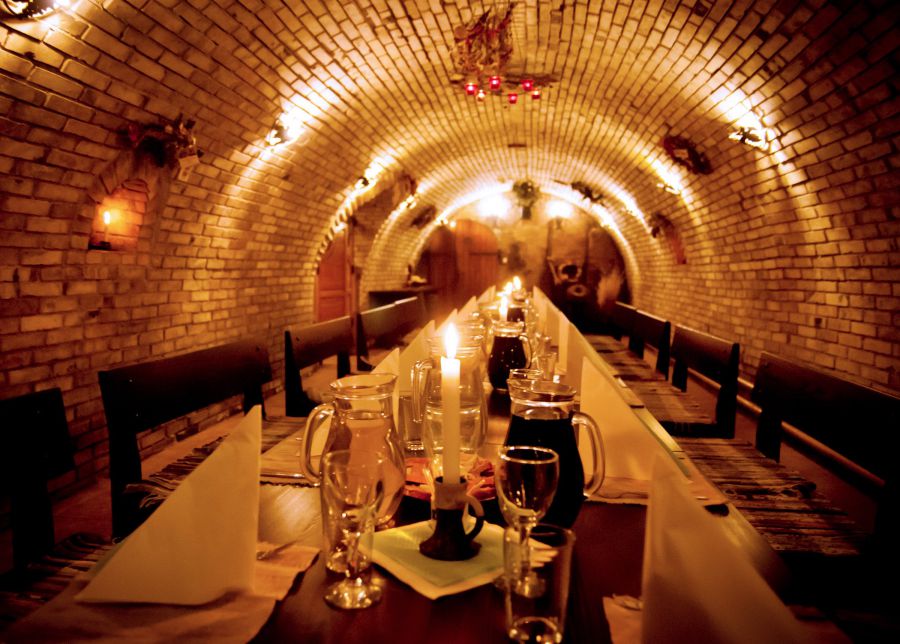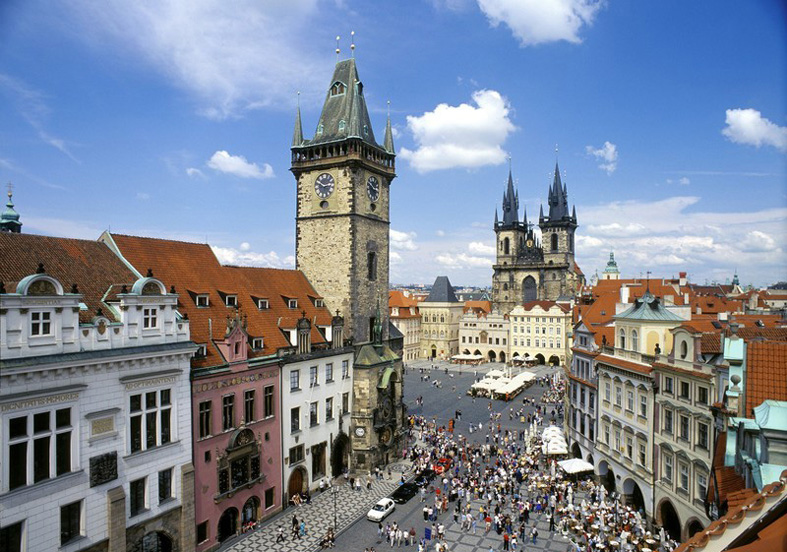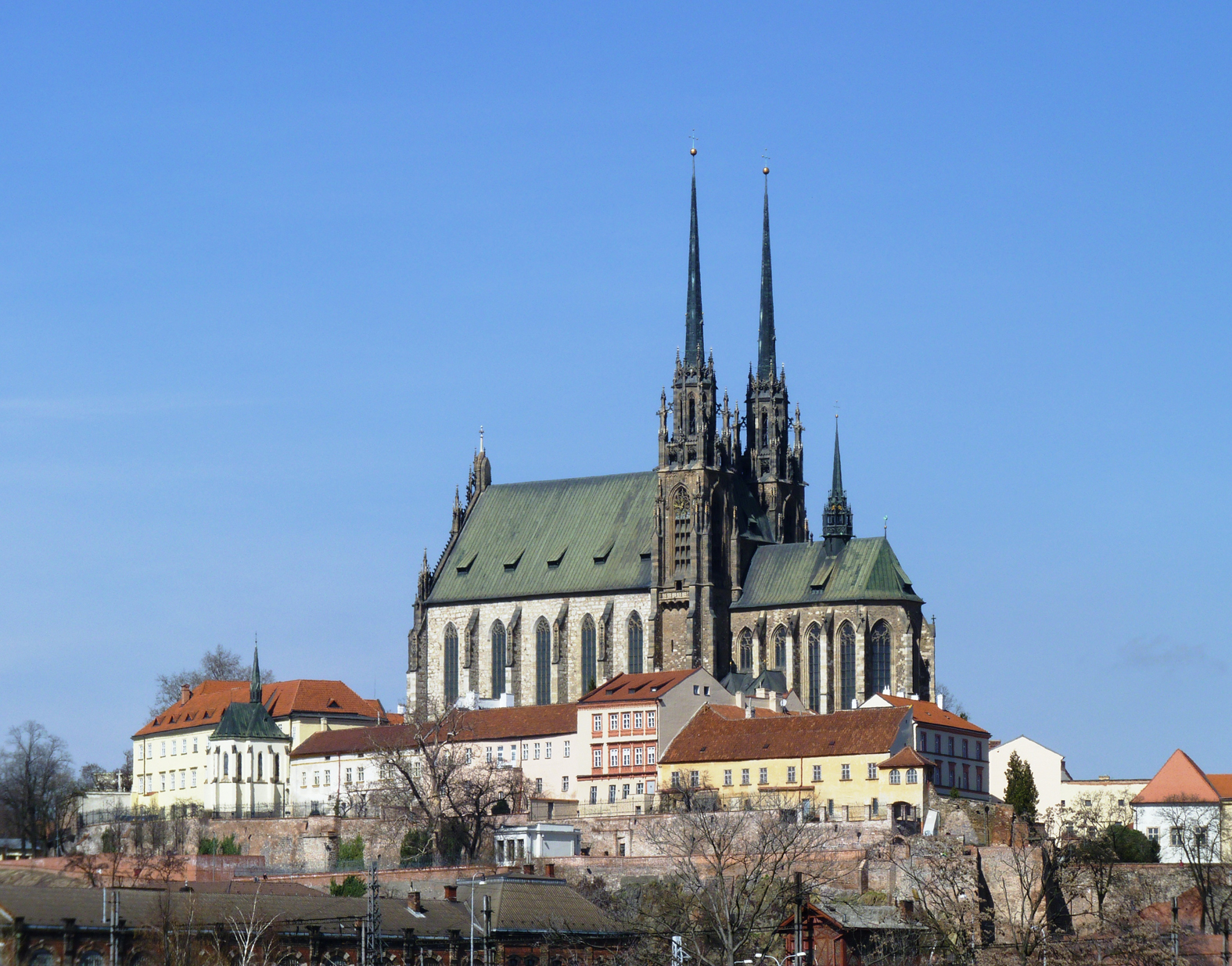Getting to know the Czech Republic
Discover the Czech Republic: its culture, economic situation and standards of living. Find out unexpected aspects of the Czech Republic, a country in the very heart of Europe.
The Czech Republic on a world map
The Czech Republic is located in the Northern Hemisphere, approximately in the middle of the European Continent. Its neighbouring states are Germany (to the west), Poland (to the north), Slovakia (to the east, which together with the Czech Republic constituted Czechoslovakia until 1992) and Austria (to the south).
Area size
With a total area of almost 79,000 square kilometres, the Czech Republic is a mid-size European country. Its size is comparable to Austria or Ireland and would it fit inside France seven times. The country could fit 122 times within the area of the United States.
The Czech Republic makes up 2% of the European Union. The country comprises three historical lands - Bohemia, Moravia and Silesia. Bohemia is the largest, and its size corresponds to Togo in Africa or the Dominican Republic in the Caribbean. The area of Moravia is half the size of Bohemia, and the smallest land, Silesia, has an area of approximately 4,500 square kilometres.
Administratively, the Czech Republic is divided into 14 regions; one of those being the capital city of Prague. The largest region - Central Bohemia - surrounds Prague from all sides. The list of the largest cities of the Czech Republic opens with the capital city of Prague, which is followed by Plzeň, Brno, Liberec and Ostrava.
Economic system of the Czech Republic
The territory of the Czech Republic was one of the most economically developed parts of Europe at the beginning of the last century. It was the most industrial part of Austria-Hungary. After the establishment of an independent state in 1918, Czechoslovakia then ranked among the top developed states in the world. After the Second World War, and as a result of the social changes related to the rise of the communist regime, significant changes in the economy system were enforced. All industrial companies were nationalized and the economy started to be controlled centrally on the basis of a national economic plan. Within the Soviet bloc, the Czechoslovak economy system focused even more on the heavy-industry development, which was demanding in resources and energy. The traditional economical branches were suppressed, such as the glass industry, the food industry and the textile industry. The proportion of producing the means of production grew at the expense of consumer goods. After the fall of the communist regime in 1989, the Czech economy system was at the start again; previous competitors, who had not been affected by communism, were far ahead. In the years right after the revolution, the Czech economic system had to absorb all changes that had occurred on world markets; the changes were often very dramatic. Within the restitution system, businesses and land were returned to their previous owners; during the coupon privatization, a large majority of state companies were privatized. Some important companies were sold to foreign investors (Škoda Auto, Plzeň Brewery); some were bought by interested Czech parties (ČKD, Škoda Plzeň).
Currently, the Czech Republic ranks among the fastest-developing countries in the region and compensates for the delay that resulted from the historical development. It is important that the Czech Republic did not become just a workshop for foreign investors, but that the human potential allowed the country to create products of great added value.
Traditional Czech products
Glass, Porcelain
The glass-making industry and branded porcelain have a very long tradition in the Czech Republic. The product range is very broad, and specialities include lead crystal glass, cut glass and glass figurines.
Bohemian garnet
Bohemian garnet, which can only be found in Bohemia, has always maintained a unique position among other garnet stones due to its unique, fiery red colour and the light refraction.
Beer
Czech beer is one of the best-known beers worldwide. The biggest Czech brewers include Prazdroj (Pilsner Urquell), Staropramen, Budvar (Budweiser), Bernard, Starobrno and many others. There are many other smaller, often family-run breweries in the Czech Republic, which are mostly operated in combination with a restaurant, where you can sample the local beer on the spot.
Other products: automobiles (Škoda), tramcars, military equipment (Radars), airplanes (Aero Vodochody), Petrof pianos, Baťa shoes, Prim watches etc.
...read more
Agriculture
Czech agriculture has a long tradition, in spite of the Czech Republic being more of an industrial country. The share of agriculture (together with forestry) in gross added value in the national economy is now coming closer to the average for the countries of the European Fifteen. Agriculture is no longer for the production of food only, but now occupies an important social and environmental function. Agricultural activity is an inherent, essential element of the rural environment that gets care and support.
Land
Agricultural entrepreneurs now farm around half (54 %) of the total area of the country. There are currently 4.2 million hectares of agricultural land in the Czech Republic. A decisive part of this area (3 million hectares, 71 %) is arable land on which individual crops are rotated. Permanent cultures consist of grassland (978 thousand hectares), gardens and fruit orchards (209 thousand hectares), vineyards (19 thousand hectares) and hop fields (10 thousand hectares).
Labour
Businesses with more than 50 hectares of agricultural land occupy 92.2% of the total area of the agricultural land farmed. The percentage of workers in agriculture in the overall employment structure of the national economy is 2.9%. Agricultural production employed approximately 135 thousand people.
Plant production
Plant commodities are understood to be field and special crops cultivated for their primary and secondary products for use in human sustenance and consumption and are used to feed farm animals and for technical and pharmaceutical use. They include products such as grain, pulses, root crops, fodder plants and technical and special crops that include vines, sugar beet, oil crops, hops, fruit, vegetables and curative and aromatic plants.
Animal production
Animal production mainly involves submontane and mountain areas where the pastoral breeding of cattle and sheep predominates. The principle aim of animal production is to produce meat, milk and eggs for the domestic market and for effective export. At present, some 586 thousand cows are kept in the Czech Republic, of which 227 are a system without market milk production (suckler cows). Beef cattle breeding started in the Czech Republic in 1990. Since its introduction Charolais is the most important beef breed in the Czech Republic.
Organic farming
Organic farming has been developing in the Czech Republic since 1990 and is characterized mainly by the extensive breeding of cattle (mainly beef breeds), goats and sheep in less favourable agricultural areas. In particular, meat, milk and dairy products are products mostly placed in the market.
Basic Czech Phrases
Hello – Dobrý den – (dobreh den)
Good morning – Dobré ráno – (dobreh rahno)
Good evening – Dobrý večer – (dobreh vehcher
Good Night – Dobrou noc – (dobroh nots)
Good bye – Nashledanou – (nas-klehdanoh)
Please – Prosím – (proseem)
Thank you – Děkuji – (dyekooyi)
Yes / No – Ano / Ne – (ano / ne)
Excuse me – Promiňte – (prominyte)
My name is – Jmenuji se … (ymeenooye se)
How much? – Kolik? – (kolik)
How long? – Jak dlouho? – (yak dloh-ho)
Where is … ? Kde je … ? – (gde ye)
I’d like … Chtěl bych … (khtyel bikh)
I do not understand – Nerozumím – (nerozoomeem)
What time is it? – Kolik je hodin? (kolik ye hodeen)
Can I have a …? – Mohl(a) bych dostat … ? – (mo-hla bikh dostat)
What is it? – Co? – (tso)
How are you? – Jak se máte? – (yak-se mah-te?)
Do you speak English? – Mluvíte anglicky? (mlu-veete an-glits-ki?)
1 – jedna – (yed-na), 2 – dvě – (dvye) , 3 – tři – (trzbi), 4 – čtyři – (chti-rzhi), 5 – pět – (pyet), 6 – šest – (shest), 7 – sedm – (sedm), 8 – osm (osm), 9 – devět (dev-yet), 10 – deset – (des-et)
The bill, please. – Prosím účet – (pro-seem oo-chet)
Waiter! – Pane vrchní – (pane vrkh-nyee!)
Prague, in Czech – Praha, is the capital and largest city of the Czech Republic and fourteenth-largest city in the European Union. It is also historical capital of Bohemia proper. Situated in the north-west of the country on the Vltava river, the city is home to about 1.3 million people, while its metropolitan area is estimated to have a population of 2.5 million. The city has a temperate oceanic climate with warm summers and chilly winters. Prague is a city of very high standards, offering both historical and modern conference venues, hotels, restaurants and places of interest.
In the course of its thousand-year history, Prague has always been the political, cultural, and business centre of the country. Over the centuries, people have invented such nicknames for Prague as the City of a Hundred Spires, Golden Prague or Magic Prague – always celebrating its architectural and spiritual richness and its mystical attraction. Prague, sometimes called the "mother of cities", belongs to the architecturally unique European towns, attractive for tourists from around the world. Visitors find themselves enjoying a living museum of European architecture from Romanesque time to the present.
Founded during the Romanesque and flourishing by the Gothic, Renaissance and Baroque eras, Prague was the capital of the Kingdom of Bohemia and the main residence of several Holy Roman Emperors, most notably of Charles IV (r. 1346-1378). It was an important city to the Habsburg Monarchy and its Austro-Hungarian Empire. The city played major roles in the Bohemian and Protestant Reformation, the Thirty Years' War and in 20th-century history as the capital of Czechoslovakia during both World Wars and the post-war Communist era.
Prague is home to a number of well-known cultural attractions, many of which survived the violence and destruction of 20th-century Europe. Main attractions include Prague Castle and Gothic Saint Vitus Cathedral, Charles Bridge, Old Town Square with the Prague astronomical clock, the Jewish Quarter, Petřín hill and Vyšehrad. Since 1992, the extensive historic centre of Prague has been included in the UNESCO list of World Heritage Sites.
The city has more than ten major museums, along with numerous theatres, galleries, cinemas and other historical exhibits. An extensive modern public transportation system connects the city. It is home to a wide range of public and private schools, including Charles University in Prague, the oldest university in Central Europe.
In 2019, Prague was ranked as 69th most liveable city in the world, second in the former Eastern Bloc to Berlin. Its rich history makes it a popular tourist destination and as of 2017, the city receives more than 8.5 million international visitors annually. Prague is the fourth most visited European city after London, Paris and Rome.
Useful links:
• More information: https://en.wikipedia.org/wiki/Prague
• The official tourist website for Prague: www.prague.eu
• The videos about Prague: here and here
• Download the brochure about Prague: here (pdf file)
Hotel contact:
GRANDIUM HOTEL ****
Politických vězňů 12
110 00 Prague 1
phone: +420 234 100 100
email: reception@hotel-grandium.cz
web-site: www.hotel-grandium.cz
Brno is a city in the South Moravian Region of the Czech Republic. At the confluence of the Svitava and Svratka rivers, Brno has about 400,000 inhabitants. It is the seat of the Constitutional Court, the Supreme Court, the Supreme Administrative Court, and the Supreme Public Prosecutor's Office, and a number of state authorities, including the Ombudsman, and the Office for the Protection of Competition. Brno is also an important centre of higher education, with 33 faculties belonging to 13 institutes of higher learning and about 89,000 students.
Brno Exhibition Centre (BBV), where the national livestock show will take place, ranks among the largest exhibition centres in Europe. The complex opened in 1928 and established the tradition of large exhibitions and trade fairs held in Brno.
The most visited sights of the city include the Špilberk castle and fortress and the Cathedral of Saints Peter and Paul on Petrov hill, two medieval buildings that dominate the cityscape and are often depicted as its traditional symbols. Another architectural monument of Brno is the functionalist Villa Tugendhat which has been included on UNESCO list of World Heritage Sites.
More information: https://en.wikipedia.org/wiki/Brno
Hotel contact:
QUALITY HOTEL BRNO EXHIBITION CENTRE ****
Křížkovského 20
603 00 Brno
phone: +420 543 122 111
email: reception.qbex@q-hotels.cz
web-site: QualityHotelBrnoExhibitionCentre.com
Post congress tour - 3 countries (optional)
Lednice Castle (UNESCO) - Bratislava City Tour (Slovakia) - Overnight in Bratislava - One Day trip to Vienna (Austria) by speed boat from Bratislava - Vienna city Tour - Overnight in Bratislava - Transfer to Budapest (Hungary) - Budapest city Tour - Overnight Budapest - Individual transfer to Budapest airport - Departure
Contact
Organizer and Expert Guarantor:

(Czech Beef Cattle Association)
Address: Těšnov 17, Praha 1, 110 00, Czech Republic
E-mail: info@cschms.cz
Website: www.cschms.cz (CZ), www.beefcattle.cz (EN)
Technical Organizer:

Address: Nad Žlebem 459, Uherské Hradiště, 686 05
Phone: +420 571 151 613
GSM: +420 603 180 400
E-mail: info@etours.cz
Website: www.etours.cz
 Facebook
Facebook YouTube
YouTube






